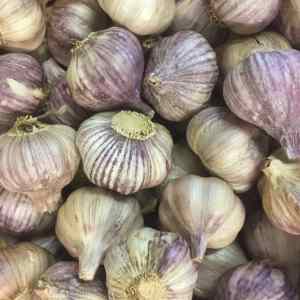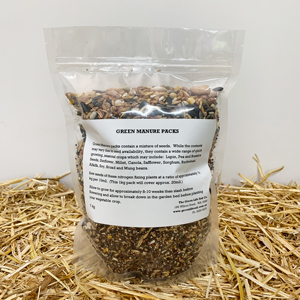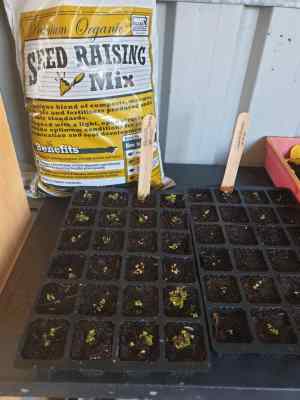| item(s), Total: $0.00 View Cart |
| Shopping cart is empty. |
Hopefully this newsletter can give you some ideas & inspiration to get you out there. If your garden hasn't been so successful over summer, it's time to take heart and have another go. With milder conditions things don't need as much assistance/interference to thrive - and for busy people it's a bonus! Thank you to everyone who contacted us last month to touch base about the recent fires - it was lovely to hear from so many of you. Our thoughts go out to many who are trying to rebuild their lives/homes/fencing. You may not be aware - but the bushfire advice is STILL active all these weeks later, and even after rain. Apparently smouldering tree roots underground and falling trees are still flaring up in some areas, and work is being done to ensure people are safe. There's been an army of Western Power workers on the job too - restoring damaged power poles and lines is a huge task. Let's hope for everyone's sake that the remaining hot weather causes no further issues with fires.
This month there's some information about a pest that's causing problems throughout Perth at the moment (particularly among Rose growers) - the Chilli Thrip. Unfortunately it doesn't only attack chillis or roses (a wide range of precious edible plants are also at risk!) - so it's definitely one to keep an eye on. Also this month Leesa has another article for us - focussing on the herb Mugwort. This is a little known herb (with traditional and medicinal uses) related to Wormwood. Leesa is running an online herb course - there's details below of that if you'd like to learn more, and as GLSC customers, you get a discount on the cost, too So until next month - happy gardening, and we look forward to seeing you soon!. In this newsletter: Jobs to do in the March garden March Jobs in your garden
What to Plant NOW
VIP Special Offer
So if booking a delivery, coming into store - simply ask our team members for your VIP special offer & grab some free fish hydro.If making an online order - please add your request to the delivery notes section of your order. Pest Profile - Chilli Thrip (Scirtothrips dorsalis)
Their life cycle is about 2 weeks; so their numbers can build up very quickly in ideal conditions (females can lay up to 200 eggs in their lifetime). Hot nights seem to be a factor in their breeding.Eggs are laid within the leaf tissue, and the nymphs will feed on your plants. Pupation can take place in crevices on the plant, under flower calyxes and also among leaf litter in the ground. How to deal with Chilli Thrip.
Herb in Focus - Mugwort (article by Leesa Caldwell)
History (short version)
The history of Mugwort is fascinating. Artemisia, the Latin botanical name of Mugwort comes from the name of the Greek Moon goddess, Artemis. The moon, as a guiding light of the night, hints at mugwort’s abilities to enhance dreams. Over centuries mugwort has been admired for its magical, mystical, and spiritual uses, especially for clairvoyance and warding off evil energy. Herbalist Scott Kloos says that mugwort leaves in all forms – tea, tincture, smoke, or even hung above the bed or placed under the pillow – promote vivid dreams and help uncover, access, and transform areas of psychic unconsciousness. Regardless of the lack of research-based studies, this unique plant continually shows up in many different anecdotes and literature across time. Growing conditions
Mugwort thrives in well drained moist to dry sandy soil and prefers sunny position in your garden. If it happens to get a bit of shade throughout the day that is fine as well. It can tolerate many soil conditions, including alkaline soil with a pH range of 4.8 – 8.2. Description
HarvestingThe best time to collect mugwort is right before its very tiny flower buds open, which is normally in late summer. Clip the tall stalks so that you are harvesting the upper third of the plant. Hang a bundle of the stalks upside down to dry. How to use Mugwort
There are many different ways to use mugwort in herbal preparations – from topical to internal and inhalation. The most common ways to ingest mugwort is by making a cold or hot infusion or taking a tincture. Caution
(Note - Herbs can affect how your body responds to prescription medication. Always check with your Doctor or qualified medical specialist before ingesting herbal remedies.) About LeesaLeesa (pictured right) is a qualified Naturopath, Master Herbalist, Nutritionist and Aromatherapist. She grows a range of edible and medicinal vegetables and herbs under her business “The Greenhouse Organic” – available at The Green Life Soil Co. You can visit her web page at www.oaktreeherbalclinic.com.au and www.thegreenhouseorganic.com.au Photo Competition
This month, I'd like to thank Mike Bullard from Willetton, who was kind enough to send in a testimonial:- "We started gardening in the front yard in november. After a couple of big mistakes, we found you guys. You listened and gave great advice. We've now got good soil, right pH and we're harvesting a range of veggies everyday, just 3 months later. Thanks heaps. We sit in the garden every evening, it's a source of great satisfaction and regular conversations with neighbours. Guess who we recommend they contact???" We love hearing how people are seeing their gardens thrive, and sharing the joy with friends and neighbours. That's really what gardening's about, isn't it? I can see so many productive plants in Mike's photo - so it shows that you don't need a massive space to enjoy growing some of your own food. Thanks again Mike! If you'd like to be in the running next month, email in your photos (or send via Facebook) with the title 'photo competition' - good luck! Retailer Update
Remember all stockists carry different items - if there's an item of ours they don't usually carry, in most cases they'd be very happy to add it to their next order for you. THANK YOU for being part of the Green Life family - stay safe, stay healthy & keep gardening!
|



 Welcome to Autumn - well, officially anyway! In the Nyoongar calendar, we're still in Birak - or 2nd summer. Their knowledge of the land and how it changes with the seasons is quite accurate - we know there's usually some hot days in March. However, I'm sure you've noticed that the days are getting shorter, and the angle of the sun is changing ever so slightly. We can tell we're on the cusp of a change. Gardeners get quite excited in Autumn - it is a FABULOUS time to be growing!
Welcome to Autumn - well, officially anyway! In the Nyoongar calendar, we're still in Birak - or 2nd summer. Their knowledge of the land and how it changes with the seasons is quite accurate - we know there's usually some hot days in March. However, I'm sure you've noticed that the days are getting shorter, and the angle of the sun is changing ever so slightly. We can tell we're on the cusp of a change. Gardeners get quite excited in Autumn - it is a FABULOUS time to be growing! Autumn means time to plant - each week we've got more seedling varieties coming on line; and a new seed order from Eden Seeds is imminent. We have received our first batch of Certified Organic Garlic (Italian Purple) to sell; and also conventionally grown (Rojo). Seed potatoes are also not far away - so for all you early birds who are keen to get growing - make sure you come in soon! Thankfully supplies are a little easier for seeds & seedlings this year (compared to the sheer craziness that last March brought with it!) so no panic buying required! If you're new to gardening we've got some good tips
Autumn means time to plant - each week we've got more seedling varieties coming on line; and a new seed order from Eden Seeds is imminent. We have received our first batch of Certified Organic Garlic (Italian Purple) to sell; and also conventionally grown (Rojo). Seed potatoes are also not far away - so for all you early birds who are keen to get growing - make sure you come in soon! Thankfully supplies are a little easier for seeds & seedlings this year (compared to the sheer craziness that last March brought with it!) so no panic buying required! If you're new to gardening we've got some good tips .JPG) Prep your soil! Where you intend to plant your winter vegies, get some OM (organic matter) into the soil. This could be your own compost, or some aged manure, or you can try our Vegetable Concentrate - which is made exactly for this purpose of enriching your sandy/depleted soil. If soil is particularly difficult to wet, use a good quality wetting agent (like Eco-wet), and look at incorporating more clay to assist with water holding next summer. Charlie Charcoal is also fabulous for helping gardens hold onto nutrients and moisture. We already use clay and Charlie in our mixes - but both are available as separate products if you choose to do your own amendments.
Prep your soil! Where you intend to plant your winter vegies, get some OM (organic matter) into the soil. This could be your own compost, or some aged manure, or you can try our Vegetable Concentrate - which is made exactly for this purpose of enriching your sandy/depleted soil. If soil is particularly difficult to wet, use a good quality wetting agent (like Eco-wet), and look at incorporating more clay to assist with water holding next summer. Charlie Charcoal is also fabulous for helping gardens hold onto nutrients and moisture. We already use clay and Charlie in our mixes - but both are available as separate products if you choose to do your own amendments. Grow a green manure crop. Early Autumn is a great time to throw in some green manure seeds, which you can allow to grow for as long as you like before turning it through the soil. This is an inexpensive way to add organic matter to the soil (just remember the longer it grows, the more OM you get to 'harvest'). Just remember to slash it or dig it through before it sets seeds.Our green manure packs contain a wide variety of plant types - the theory is no matter what the conditions are in your garden, something is going to thrive and produce for you. 1kg will cover up to 20m2 (pack pictured right).
Grow a green manure crop. Early Autumn is a great time to throw in some green manure seeds, which you can allow to grow for as long as you like before turning it through the soil. This is an inexpensive way to add organic matter to the soil (just remember the longer it grows, the more OM you get to 'harvest'). Just remember to slash it or dig it through before it sets seeds.Our green manure packs contain a wide variety of plant types - the theory is no matter what the conditions are in your garden, something is going to thrive and produce for you. 1kg will cover up to 20m2 (pack pictured right). Sow your seeds. While it's time to save your summer seeds, it's time to be planting your winter crops. Use seedling trays (or recycle punnets/small pots - just give them a really good scrub first and leave out in the sun to dry). This gives you a little more flexibility to move trays around and nurse them if we have any hot/dry spells. Check out our top tips for growing from seed
Sow your seeds. While it's time to save your summer seeds, it's time to be planting your winter crops. Use seedling trays (or recycle punnets/small pots - just give them a really good scrub first and leave out in the sun to dry). This gives you a little more flexibility to move trays around and nurse them if we have any hot/dry spells. Check out our top tips for growing from seed  Oooooh, so many things to choose from in Autumn! Check out our when to plant guides (there's one on vegies and one on herbs), plus there's also an extended e-guide 'Top 12 Edible plants for Autumn/Winter' -
Oooooh, so many things to choose from in Autumn! Check out our when to plant guides (there's one on vegies and one on herbs), plus there's also an extended e-guide 'Top 12 Edible plants for Autumn/Winter' -  It's definitely time to get gardening - so I hope with this month's VIP offer, you'll be out there soon, showing your garden some love! This month as our VIP special offer, we've got our awesome Fish Hydrolysate 1L FREE - with any purchase over $100.
It's definitely time to get gardening - so I hope with this month's VIP offer, you'll be out there soon, showing your garden some love! This month as our VIP special offer, we've got our awesome Fish Hydrolysate 1L FREE - with any purchase over $100. Conditions this year seem to have favoured the explosion of Chilli Thrip - a small, sap-sucking insect native to south-east Asia, but now found throughout much of the world - including Perth! They are known to attack a wide range of plants including Chilli, Strawberries, Mangos, Blueberries, Citrus, Passionfruit, Sweet Potato, Asparagus, Bananas, Silverbeet, Grapes and Roses and many other ornamental plants. The insects themselves are tiny (1-2mm long) so often go undetected, and are hard to correctly ID without a very good magnifying glass. Eggs are microscopic. The tiny adults are usually pale in colour with darker wings. They prefer young growth, so are active usually around the growing tips of your plants. The damage they do appears as distorted/puckered leaves with bronze patches, silvering off of leaves (similar to spider mite), and distorted flowers (in the case of Roses, where they attack the buds when forming). The damage they do can be unsightly, but in enough numbers the Chilli Thrip can weaken a plant to the point it dies, and certainly make it more susceptible to heat/water stress and other diseases. The thrips themselves can spread pathogens between plants (including Tomato Wilt Virus). The photo above shows damaged roses. (Photo courtesy of DPIRD, WA)
Conditions this year seem to have favoured the explosion of Chilli Thrip - a small, sap-sucking insect native to south-east Asia, but now found throughout much of the world - including Perth! They are known to attack a wide range of plants including Chilli, Strawberries, Mangos, Blueberries, Citrus, Passionfruit, Sweet Potato, Asparagus, Bananas, Silverbeet, Grapes and Roses and many other ornamental plants. The insects themselves are tiny (1-2mm long) so often go undetected, and are hard to correctly ID without a very good magnifying glass. Eggs are microscopic. The tiny adults are usually pale in colour with darker wings. They prefer young growth, so are active usually around the growing tips of your plants. The damage they do appears as distorted/puckered leaves with bronze patches, silvering off of leaves (similar to spider mite), and distorted flowers (in the case of Roses, where they attack the buds when forming). The damage they do can be unsightly, but in enough numbers the Chilli Thrip can weaken a plant to the point it dies, and certainly make it more susceptible to heat/water stress and other diseases. The thrips themselves can spread pathogens between plants (including Tomato Wilt Virus). The photo above shows damaged roses. (Photo courtesy of DPIRD, WA) Trim off the affected leaves/growing tips/buds from your plants, and drop them straight away into a plastic bag. Seal, and dispose of in the bin. Chilli Thrips do have natural predators - like lacewings, predatory mites and wasps; and there are soil borne predatory nematodes that feed on pupae. However, if you have an infestation and want to deal with it before it spreads elsewhere in your garden, organic treatments include neem sprays, potassium soap sprays, spinosad sprays are worth trying; but may need repeat treatments done at least weekly. Once you're on top of numbers, as a preventative/discouragement a good squirt with your hose (up and under the leaves) to wet down the plant will make conditions less favourable for them, as thrips prefer dry conditions. Numbers will start to build up again in Spring - so preventative treatment (and a close eye on your plants) will be helpful. Mark your gardening diary to start looking for signs around September. (Photo credit: photo by Lyle Buss, Department of Entomology and Nematology, University of Florida)
Trim off the affected leaves/growing tips/buds from your plants, and drop them straight away into a plastic bag. Seal, and dispose of in the bin. Chilli Thrips do have natural predators - like lacewings, predatory mites and wasps; and there are soil borne predatory nematodes that feed on pupae. However, if you have an infestation and want to deal with it before it spreads elsewhere in your garden, organic treatments include neem sprays, potassium soap sprays, spinosad sprays are worth trying; but may need repeat treatments done at least weekly. Once you're on top of numbers, as a preventative/discouragement a good squirt with your hose (up and under the leaves) to wet down the plant will make conditions less favourable for them, as thrips prefer dry conditions. Numbers will start to build up again in Spring - so preventative treatment (and a close eye on your plants) will be helpful. Mark your gardening diary to start looking for signs around September. (Photo credit: photo by Lyle Buss, Department of Entomology and Nematology, University of Florida) Common name: Mugwort
Common name: Mugwort Young leaves are opposite (2 leaves per node), rounded, unlobed, woolly underneath and attached to the stem by way of a long leaf stalk. The erect stems are 60cm – 2m tall and angular with longitudinal ridges or grooves. Colour ranges from green to green with purple ridges to entirely purple.
Young leaves are opposite (2 leaves per node), rounded, unlobed, woolly underneath and attached to the stem by way of a long leaf stalk. The erect stems are 60cm – 2m tall and angular with longitudinal ridges or grooves. Colour ranges from green to green with purple ridges to entirely purple.  Mugwort is a uterine stimulant so if you are pregnant or wanting to fall pregnant you should avoid Mugwort altogether. Mugwort is potentially allergenic to people who are sensitive to plants in the Asteraceae family.
Mugwort is a uterine stimulant so if you are pregnant or wanting to fall pregnant you should avoid Mugwort altogether. Mugwort is potentially allergenic to people who are sensitive to plants in the Asteraceae family. Each month we select someone who has sent in a photo (or photos) from their garden to win a $50 credit to spend with us @GLSC. To be in the running, send in your picture(s) and a brief note about your garden and what you're growing and what you love about it. We all love to get inspiration from what other people are doing, and learn from their successes (and failures) to help us in our own garden.
Each month we select someone who has sent in a photo (or photos) from their garden to win a $50 credit to spend with us @GLSC. To be in the running, send in your picture(s) and a brief note about your garden and what you're growing and what you love about it. We all love to get inspiration from what other people are doing, and learn from their successes (and failures) to help us in our own garden. Beaufort Garden World - Inglewood 9271 0585
Beaufort Garden World - Inglewood 9271 0585




















